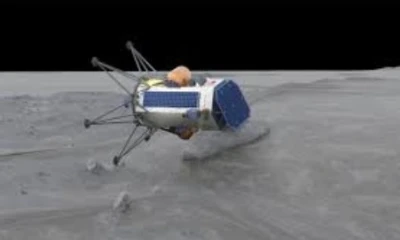Odysseus, the maiden private spacecraft from the United States, has encountered setbacks after its historic touchdown on the lunar surface. The spacecraft experienced a leg malfunction upon landing near the Moon’s South Pole, causing it to tip over. Despite initial efforts to maintain communication, Odysseus ceased transmission on Thursday, prompting controllers to initiate standby mode to preserve its potential reactivation in the coming weeks.
The decision to place Odysseus in hibernation mode followed the depletion of its batteries, which occurred after sending one final image to mission control. Intuitive Machines, the company behind the spacecraft, bid farewell to Odysseus via social media, expressing hopes for future communication. Originally slated for a week-long mission, Odysseus exceeded expectations by successfully landing on February 22, marking a significant milestone as the first private US spacecraft to achieve a lunar touchdown.
Despite facing challenges during descent, including a navigational glitch, Odysseus managed to reach the lunar surface. However, the landing resulted in an awkward posture, hindering its operational capabilities. Despite being tipped over, the spacecraft demonstrated resilience by maintaining functionality despite damage to its solar power and communication systems.
Odysseus carried six NASA experiments valued at $118 million, showcasing its importance in NASA’s commercial lunar delivery program. This achievement is a significant step towards advancing private space exploration, with Odysseus joining the ranks of countries like Japan in achieving lunar landings since the 1960s. Prior attempts by private companies had faced difficulties, with one lander crashing back to Earth earlier in the year.
NASA views these private lunar missions as critical precursors to manned missions, expected to occur in the near future. Odysseus’ journey represents a milestone in space exploration, marking the first US lunar landing since Apollo 17 in 1972. As efforts to reactivate Odysseus continue, the mission serves as a testament to the advancements and challenges inherent in private space exploration endeavours.

















